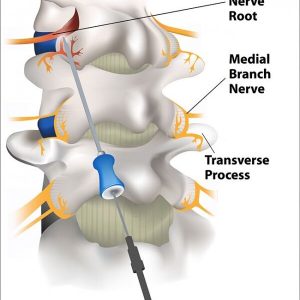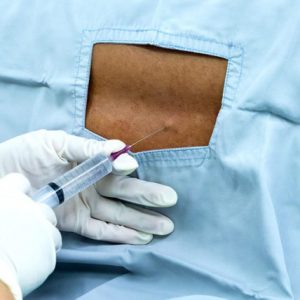
Peripheral Nerve Block
Peripheral nerve blocks are injected into a body site to reduce pain. However, peripheral nerve blocks are not the same as general anesthesia. Peripheral nerve blocks numb the body site that requires surgery for upwards of 24 hours after the surgery. Alternatively, general anesthesia is helpful for making the patient unconscious during the surgical procedure. Patients provided with a peripheral nerve block do not have to worry about the side effects caused by general anesthesia.
Peripheral nerve blocks are applied prior to surgery. The anesthesia doctor cleans off the skin of the body site where the nerve block will be applied. A needle is inserted into the skin of the body site to inject the medicine. This medicine numbs the targeted area. Ultrasound guidance helps move the needle toward the nerve.
A stimulating needle might also be used to help pinpoint the nerves. This needle transmits signals below the skin to zero in on the nerve. The signal results in a twitch in the muscle. However, this twitch won’t cause pain. You might feel a tingling sensation but it won’t prove painful. The medicine is then injected at the nerve.
Benefits of Peripheral Nerve Block
Peripheral nerve blocks make it that much easier to control pain after a surgical procedure. The nerve block zeroes in on a specific body site without causing side effects such as fatigue or nausea. In short, the primary objective of injecting a patient with a peripheral nerve block is to help him or her feel better than much faster after a surgical procedure.
Your injected body site will feel a bit weak and heavy after the nerve block starts working its magic. You might also lose muscle control at the body site. However, these are signs that the peripheral nerve block is working. There is no need to use a significant amount or potentially even any oral narcotic pain medication after the peripheral nerve block is applied.
Peripheral nerve blocks are also favored as they reduce the amount of time you have to spend in the post-anesthesia care unit. You’ll also wake up that much faster after receiving the peripheral nerve block as it reduces the amount of general anesthesia necessary for the operation, or potentially even eliminates the need for general anesthesia altogether.
Opt for a peripheral nerve block and you can either be awake for the surgery or provided with medicine that makes it easier to relax, possibly helping you fall asleep for its duration. Consult with one of our doctors and we will review your unique medical record to determine which sedation option is best for you.


Conditions Treated
Peripheral nerve blocks are used for the management of pain after surgical procedures as well as short-term pain and severe acute pain. The relief provided by nerve blocks is short-term. However, there is the potential for long-term relief as certain injections minimize nerve irritation, setting the stage for a potentially permanent healing process.
As an example, a one-time, single-shot injection provides pain relief for upwards of 24 hours after the surgery. Those looking for additional pain relief beyond the 24 hours following surgery may require a nerve catheter for a couple days.

